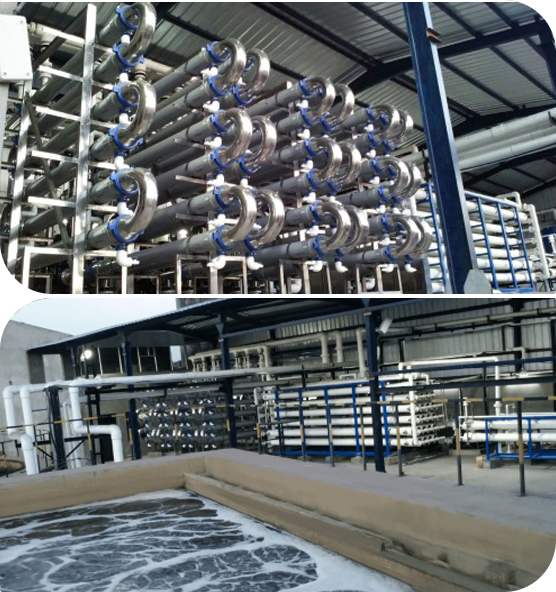
Waterman Engineers Australia has become the leading companies of Zero Liquid Discharge technique. A ZLD technique is often a procedure system which is used to eliminate all the liquid squander from a program. The objective of ZLD water procedure is to lower wastewater economically and develop potable drinking water which is match for normal use. Zero discharge procedure is a sophisticated remedy method that comprises ultrafiltration, reverse osmosis, evaporation and fractional electro deionization. And we've been a properly-recognized provider of ZLD programs.
In many Industries, for instance electrical power, oil & fuel, chemical compounds, mining and Other people, a great deal of wastewater is generated that needs to be managed. Conventionally, this discharge of wastewater is done through a plant outfall to a floor h2o human body like an evaporation pond, or occasionally deep effectively injected. These tactics bring about lots of environmental considerations by the general public in several regions of the earth, as h2o is actually a scarce supply and its administration ought to be monitored. These worries have resulted during the establishment of ZLD processes by a lot of industries to reduce their environmental footprint and enhance sustainability. And, Waterman Engineers Australia are very best ZLD suppliers you will find for This method.
PROPERTIES OF ZERO LIQUID DISCHARGE Method
The Homes of the Zero Liquid Discharge process will vary according to the precise structure and technology utilized. Nonetheless, some widespread Homes of ZLD programs include things like:
Drinking water Conservation: One among the key aims of ZLD techniques is always to conserve h2o by reducing the discharge of liquid waste in to the atmosphere.
Substantial H2o Purity: ZLD programs are intended to develop significant-good quality water that's free from impurities and contaminants, that makes them ideal for use in several industrial procedures.
Versatility: ZLD devices are sometimes developed to support a broad number of input liquid streams, that makes them flexible and well suited for use in several industries.
Sophisticated Wastewater Procedure: Zero liquid discharge programs use advanced wastewater cure methods to clear away impurities and contaminants in the effluent, manufacturing higher-excellent water.
Waste Reduction: ZLD devices help lessen squander by reducing the amount of liquid waste that should be disposed of and by producing a concentrated, sound squander product that can be securely disposed of.
Electricity Performance: ZLD systems could be Zld System Manufacturer Zero Liquid Discharge System Strength-intense due to the higher Vitality necessities of evaporation and other wastewater therapy processes. Nevertheless, developments in technological innovation are building Zero liquid discharge devices additional Electrical power-economical and price-productive.
Waterman Engineers Australia manufactures Zero Liquid Discharge (ZLD) devices built to clear away all liquid waste, aiming to supply potable water and minimize environmental impact. Their ZLD techniques normally consist of ultrafiltration, reverse osmosis, evaporation, and fractional electro deionization. Key systems utilised are Falling Movie Brine Concentrators, Pressured Circulation Crystallizer, and Other people, with a two-action technique of pre-concentration and evaporation/crystallization to Recuperate and reuse h2o. These units are adaptable to diverse industries, emphasizing water conservation, superior drinking water purity, squander reduction, and Strength efficiency. Complex specifications are diversified and customizable, taking into consideration factors like drinking water resource, circulation rate, and feed drinking water quality.
The need for Zero Liquid Discharge (ZLD) units arises in the necessity to handle environmental concerns relevant to h2o scarcity and pollution. In industries like electric power, oil & fuel, and mining, large quantities of wastewater are created. Historically, this wastewater is discharged into bodies of drinking water, producing pollution and depleting thoroughly clean drinking water means. ZLD systems goal to reduce these impacts by dealing with and recycling wastewater in just the industrial method, therefore conserving drinking water, cutting down squander, and promoting sustainability.
When considering the specialized specs of a Zero Liquid Discharge (ZLD) technique, significant features to focus on consist of the water source it will treat, the method's movement price, the quality of feed h2o, the levels of cure included, the recovery charge of water, methods for focus disposal, products of design, running situations, and program automation and Manage. These factors make sure the technique's efficiency, durability, and performance in dealing with and recycling industrial wastewater.
Zero Liquid Discharge (ZLD) plants give Added benefits for example water conservation, squander reduction, and pollution avoidance, contributing to environmental sustainability. They're relevant in industries like electrical power technology, oil and gasoline, chemicals, and mining, wherever they help in running industrial wastewater properly, reducing the ecological footprint, and complying with rigorous environmental laws. These units are vital in areas going through h2o scarcity and for industries aiming to enhance their sustainability and operational performance.
FAQs to get a Zero Liquid Discharge (ZLD) process frequently tackle its operational concepts, Expense-performance, maintenance demands, environmental effects, applicability across different industries, and regulatory compliance. These thoughts assist end users have an understanding of the method's Positive aspects, technological needs, and suitability for his or her precise wastewater administration needs.
1. Zero Liquid Discharge (ZLD) is actually a wastewater treatment method course of action designed to get rid of all liquid waste.
2. The method's components are influenced by the specific industrial procedure, wastewater composition, and regulatory needs.
3. Effluent remedy plants get rid of pollutants from textile effluents to avoid environmental contamination.
4. Benefits contain water conservation, air pollution reduction, and regulatory compliance.
five. The purpose is to reduce environmental effect by recycling water and reducing squander.
6-9. Effluent treatment crops are phases in wastewater remedy: Major (physical separation), secondary (Organic treatment method), and tertiary (Superior therapy).
ten. Unit functions include things like filtration, sedimentation, biological treatment, and disinfection.
eleven. Limiting parameters are factors that have an affect on the treatment method's efficiency, like pH and contaminant focus.
12. Structure issues consist of move amount, effluent composition, and wanted quality of taken care of water.